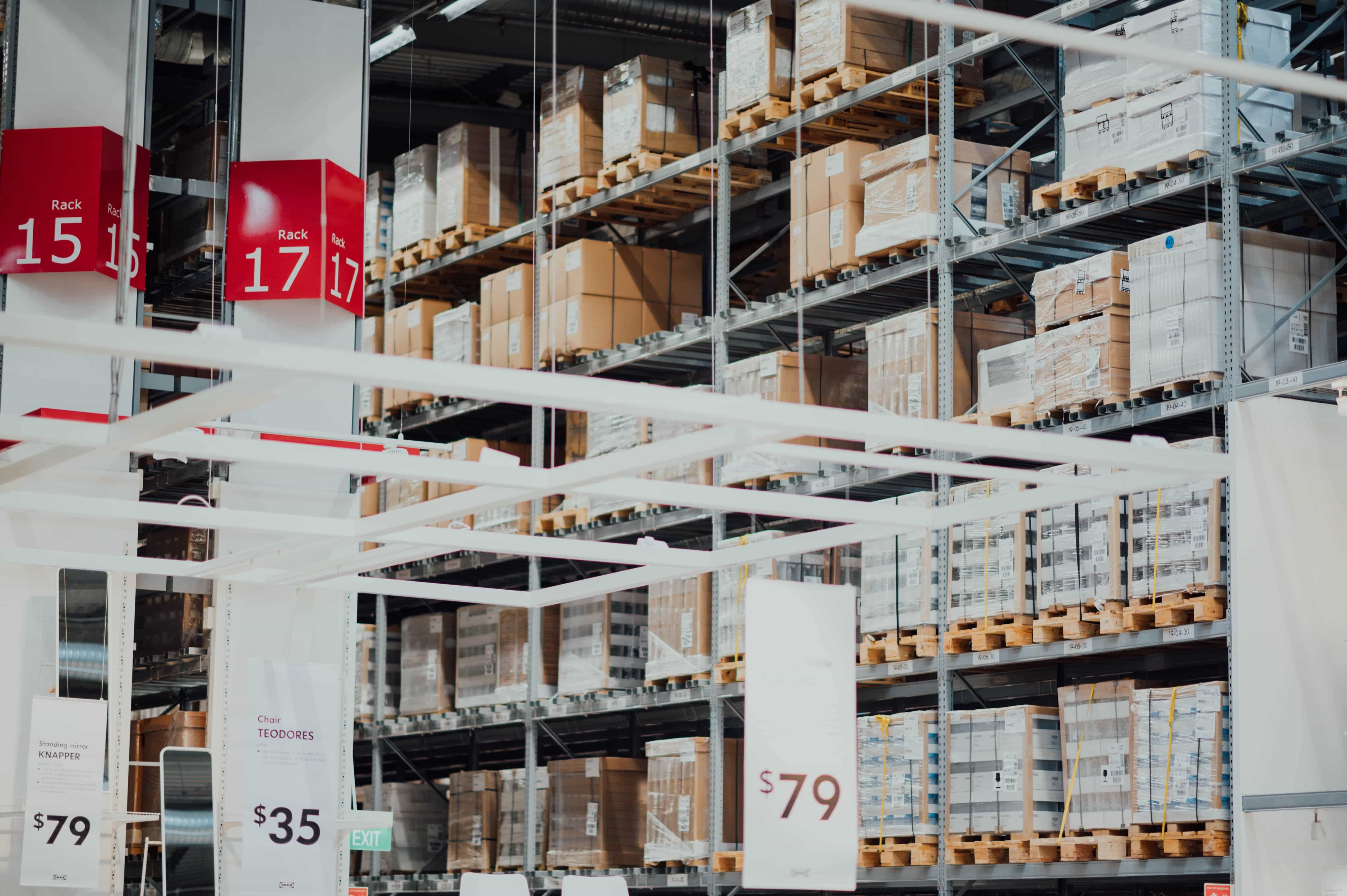Supply chain management (SCM) is one of the main ways to optimize the budget of enterprises producing goods and/or services. At the same time, a great role in the supply chains is played by logistics – the management of physical, informational, and human flows in order to optimize them and avoid unnecessary waste of resources.
Below we will talk about the important role of logistics in supply chain management that includes many suppliers, transit points, as well as points of departure, and destination
What is the Difference Between Logistics and Supply Chains?
Logistics and supply chain should not be confused. Logistics is a rather narrowly focused concept (narrower than the SCM), which simply means globalization of resource management — from every local unit to the entire network of production points.
In turn, supply chain management is a more complex category. Supply chain management involves logistics and thus performs end-to-end optimization – that is, not only within the enterprise but also when working with counterparties.
The purpose of efficient logistics management is to achieve maximum competitiveness and profitability of the company, as well as the entire network structure of supply chains, including the end-user. In this regard, the integration and introduction of innovations into the processes of supply chains, as well as into the processes of logistics, should be aimed at increasing the overall productivity of all their participants.

The Functions of Logistics within Supply Chain Management
If we systematize all areas of logistics that need to be developed for the rational management of production resources, we can single out the following functions:
- Warehouse design and management. This role of logistics in supply chain management covers several tasks at once: from the design of storage facilities to the requirements for storage of products and ending with the introduction of various automation solutions (for example, for machinery intended for transporting goods within warehouses);
- The formation of packages. Packaging, tracking and accounting – all of these tasks allow for end-to-end control of goods on the way to the customer/distributor;
- Transportation of products. This includes work with cargo carriers and vehicles listed in the company’s fleet: planning their routes, calculating fuel costs, etc.;
- Working with customs. When an enterprise plans international delivery of goods, it is very important that during their transportation the goods fully comply with customs requirements and contain all the necessary documentation;
- Working with intermediaries. Intermediaries in logistics are all third-party, non-company resources that are directly involved in the implementation of supply chains. In turn, finding intermediaries with the most acceptable ratio of quality to cost of services, as well as establishing long-term, reliable relations with them are also included in the list of tasks for efficient logistics management;
- Working with written off and returned goods. There is also such a thing as “reverse logistics”, which establishes the rules and routes for transporting the returned/discarded goods, as well as ways to dispose of them.
Challenges Logistics Helps to Overcome in Supply Chain Management
Given the above list of tasks that logistics performs in supply chain management, we can single out a number of advantages provided by its correct implementation:
- Minimization of enterprise expenses. The main role of logistics in supply chain management is primarily to increase the overall value of each delivery, which is identified by customer satisfaction. This means that the reduction and optimization of labor resources must be tied in with keeping up a certain level of quality customer service. This problem is solved both by reducing the total labor resources (primarily by eliminating unnecessary chain links), and by introducing automation solutions;
- Consolidation of traffic volumes. Transportation costs are one of the largest expense categories in logistics management. In general, transportation costs increase depending on the distance, batch size, and product exposure to damage. On the other hand, the transportation cost per unit of weight decreases as the lot size increases on long runs. Thus, the maximum consolidation of transportation volumes can help reduce transportation costs. Enlargement can be achieved by combining small lots into a single large one, intended for a long run (i.e., for a longer distance);
- Improving the quality of service. With regard to the quality of service, it is largely influenced by the speed of delivery of the goods to the end-user, as well as its transportation in proper conditions (for example, many products today are supplied with RFID tags so that both the manufacturer and the end customer could track whether all storage conditions are being observed during the transportation of the goods) and within the allowed time limits (this refers primarily to perishable goods);
- Reduction of actual losses and reduction of possible risks. As you know, a business is profitable if the value it creates exceeds the costs associated with the implementation of activities. To achieve a competitive advantage, a company must either carry out these activities at lower costs or carry them out in a way that will lead to differentiation and price increment. The first thing to be done to effectively solve this problem is reducing the losses that are associated with the return of goods. It is very important to plan not only the routes on the way to the distributor or the end-user but also the routes by which the goods are delivered back to the warehouse or to the establishments for their disposal. The second factor affecting risk reduction is the correct planning of enterprise resources, which minimizes the likelihood of damage or loss of goods or manufacturing components on the way from the extraction of raw materials to delivery of the finished product/service to the end-user;
- Minimization of the need for intermediary services. Intermediary services (transportation, storage, marketing, recycling, etc.) take up the lion’s share of the cost of the implementation of supply chains. Experienced logisticians plan routes so as to minimize the need for involving third-party services for efficient logistics management;
- Supporting goods with the necessary documentation. Insurance and support of documentation are two fundamental tasks of logistics, solving which helps to eliminate any problems associated with legal restrictions in the storage, transportation, and marketing of goods;
- Timely response to changing market demands. Advanced logistics scenarios also help to quickly adapt to changing market requirements and, thereby, maintain top positions against the backdrop of competitors and remain in demand for the target audience.
Values Logistics Provides to the Supply Chain Business
Supply chain management with the help of logistics tools helps to ensure a consistently high level of customer service with some reduction in the cost of extracting raw materials, storing, transporting, and selling goods/services to end-users. Thus, the role of logistics in supply chain management is to carry the following values:
- ensuring the smooth operation of all parts of the supply chain. Continuity of workflow is a rapid step towards both reducing the expenses and increasing overall customer satisfaction. Usually, this is achieved through proper planning and the formation of a fault-tolerant scheme of interaction between the individual links in the supply chain;
- release of labor resources. On the other side of fault tolerance is the elimination of redundant elements (intermediaries), the participation of which entails additional costs. Thus, it is very important to find a balance in which the reduction in labor resources does not entail forced downtime during the implementation of supply chains;
- coverage of a new target audience. Increasing overall customer satisfaction is a rapid step toward popularizing your brand by means of word of mouth. An additional advantage is a fact that such advertising (which is also one of the most effective methods) comes absolutely free for you;
- net cost reduction. By eliminating a number of intermediary links in the supply chain, you will be able to reduce the net cost of a product or service, and thus increase their availability to the end-user.
Conclusion
Let’s sum up the role of logistics in supply chain management. As you can see, logistics and supply chain management are two inseparable concepts that help not only reduce the company’s overall costs for the production of goods and/or services but also improve the overall impression of the level of service for your target audience. The choice of the right software also plays a significant role in optimizing logistic tasks. After all, automation today is at the head of the progress for industrial enterprises.
If you are interested in developing a customized solution for your business, in particular, for optimizing supply chains and solving logistics problems, feel free to contact us at Artelogic. We will create budget-friendly but at the same time scalable and reliable products that you can customize to the specific needs of your company.

New Trends in Energy Trading and Risk Management Software

7 Common Mistakes in Software Requirements Specifications










